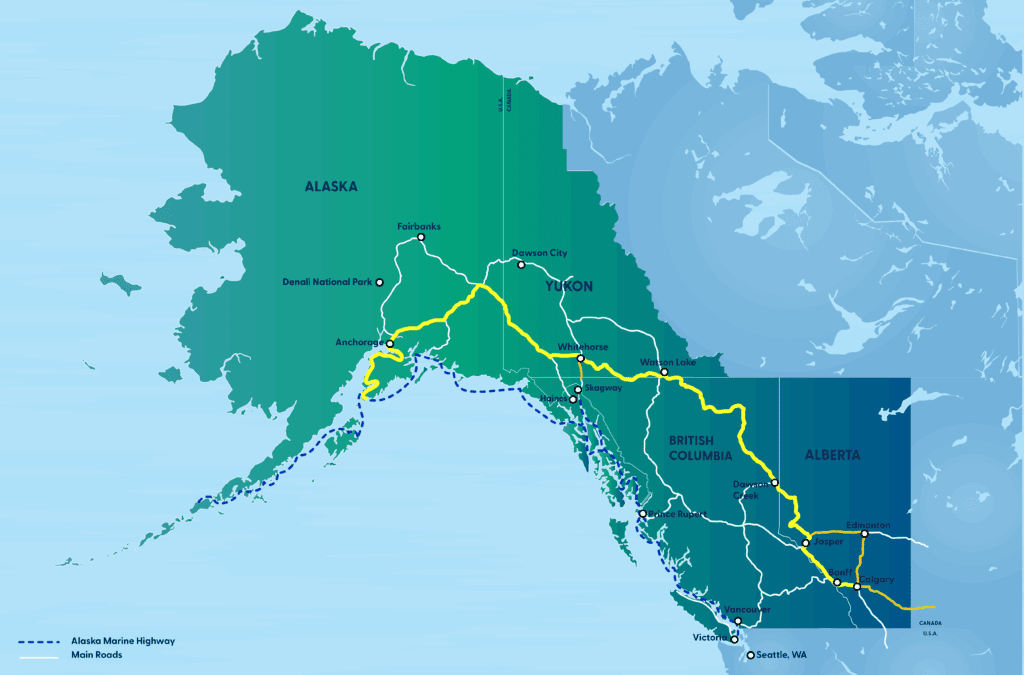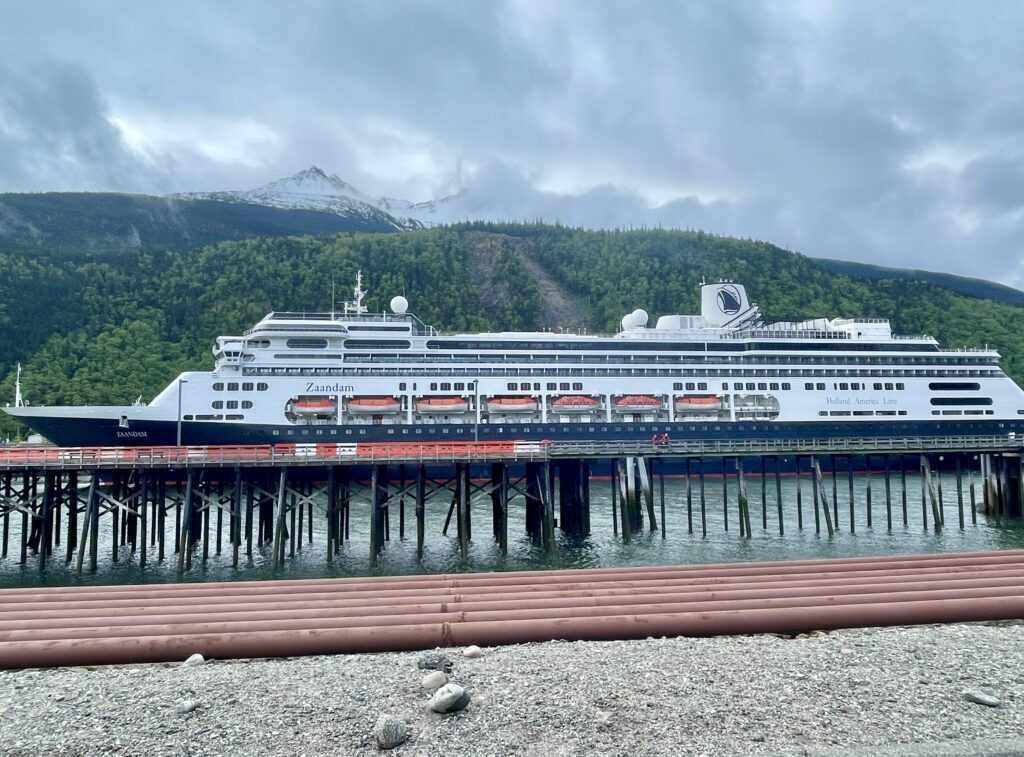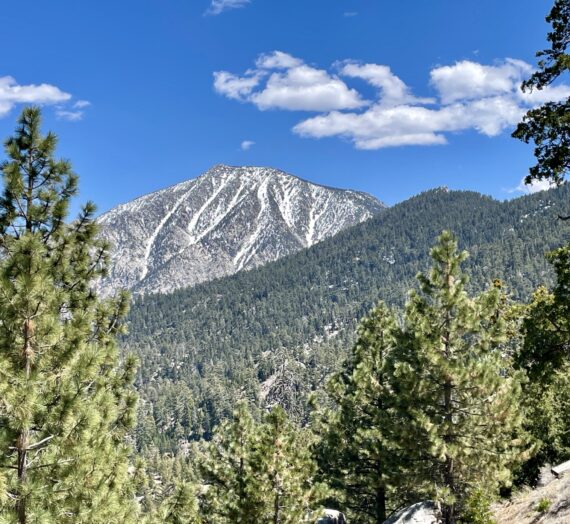
I’m loving my summer in Skagway, Alaska!
At 4 blocks wide and 22 blocks long, it’s a tiny town with a big story… a very special place indeed.


Each year, from the end of March through the first week of October, tourism takes center stage as one million people descend upon Skagway. During these months, this little town of 900 transforms into a bustling city of 3,000 employees who, like me, are all trying to give visitors the very best experience of Alaska.





How to Get to Skagway?

Skagway is a remote community in Southeast Alaska. Fortunately, there’s four good ways to get here.
Drive the Alcan Higway
A convenient way to get to Skagway is to drive. It’s only 500 miles from Anchorage or 1,800 miles from Seattle via the Alcan (Alaska-Canada) Highway! The views and wildlife are amazing!



Take the Ferry
Another way to get to Skagway is to board the Alaska Marine Highway in Bellingham, Washington or Juneau, Alaska. Bring your car, sleep on the deck and enjoy the slow views of the Inside Passage from the car ferry. It’s a stunning cruise!



Come by Seaplane
A third way to get to Skagway is to take a seaplane from Juneau. The little 6-8 seaters skim the mountains all the way up the waterway. This year, my company paid for my plane ticket so I arrived to Skagway in style.




Enjoy an Alaskan Cruise
The vast majority of visitors arrive to Skagway on cruise ships. These luxurious ships sail up the Inside Passage and Lynn Canal, which actually isn’t a canal at all; it’s the longest and deepest glacial fjord in North America. But follow it north from Juneau where you will encounter the gem of Southeast Alaska – Skagway!




Whichever way you come, our Tour Guides and Dock Representatives from Alaska Coach Tours will be waiting for you!





I’ll be in Bus 107. My passengers call it Becky’s Bus.


What Put Skagway on the Map? … Gold, of Course!
But gold was never discovered anywhere close to here. In 1896, gold was discovered 600 miles north near the Klondike River in the Yukon Territory. Skagway came to be because it was located along the route that gold prospectors took to get from the Lower 48 to the Klondike. Here’s the story:
In 1896, four prospectors were poking around Rabbit Creek (a tributary of the Klondike River), and as the story goes, found gold nuggets while washing their dishes. They immediately staked a claim and according to the Miner’s code, told a lot of others about it too. Eventually, several miners boarded the SS Portland with their riches and made their way to Seattle, Washington.
When they arrived in July of 1897, they created worldwide pandemonium. In the 1890’s a recession had clenched the world, banks were failing, railroads were failing, whole countries were failing. Unemployment reached as much as 43% in the United States and folks were desperate to support their families and secure their futures.

So, when that ship arrived in Seattle with $30 million dollars worth of gold (by today’s value), people from all over the world “stampeded” to the west coast of the United States and clambered onto steamships heading up the Inside Passage. Ships from San Francisco, Portland, Seattle, and Vancouver, BC headed straight to the deep port of Skagway, where over 100,000 men, women and children flooded the valley, built a booming tent camp and started gathering their provisions for the next leg of the journey. Gold Fever had struck the planet, everyone wanted to get to the Klondike, and Skagway was essentially the gateway to the gold rush.



To make the journey into the Klondike, these hopeful prospectors needed a lot of grub: beans, bacon, oats, flour, coffee, sugar and salt. They needed warm shirts, trousers, socks, coats, rubber overcoats, shoes and boots. In order to strike it rich, they needed gold pans, picks, shovels, whipsaws, ropes, and buckets. But they also needed a canvas tent, warm blankets and a stove in order to survive the harsh winter and the long journey through the north.



Enterprising businessmen and women figured out pretty quick that a less riskier way to get rich was to “mine the miners”. So they, too, poured off the ships into Skagway, setting up shops under tents to sell the eager prospectors all their goods and supplies – at highly inflated prices of course. As more people came to buy and sell, false-front buildings quickly lined the streets while boardwalk sidewalks kept the civilized out of the mud.
But it wasn’t all civilized in Skagway. As quick as the boomtown came to order, saloons, brothels, gambling halls and professional cons all arrived to fleece the men of their money. By the winter of 1897-1898, rough and tumble Skagway was known as one of the most lawless places on Earth.




Skagway’s most notorious problem-maker was Jefferson “Soapy” Smith. Soapy perfected his sleight of hand running shell games in Denver, but arrived in Skagway within the first few weeks of the Gold Rush. He quickly established himself as the boss of a large powerful gang and the chief pimp for all the working girls in the brothels. From his parlor, he ran a variety of imaginative cons like convincing new arrivals to lay down $5 to send a telegram home. Sure enough, a few hours later another telegram returned from the family asking for the miner to send money. When they did, all the money went right into Soapy’s pocket while that telegraph wire stretched out the back door and right into a ditch.


Soapy’s name, however, came from his most famous con, supposedly wrapping magic soap in $20, $50 and $100 bills. His street shows were well-coordinated with his own men posing as happy customers, and the newly arrived and naive bought huge sums of his “unlucky” soap.
Finally, a man named Frank Reid and a posse of do-gooders decided to clean up this town, and both Soapy and Frank lost their lives in a shoot-out in 1898. Skagway settled down after that, and with many wives joining their husbands, a real town took shape to include churches, social clubs, community picnics and a school. In fact, by 1898, Skagway was the largest city in Alaska and the first incorporated city in Alaska as of June, 1900.



Today, the Klondike National Historic Park keeps Soapy Smith’s Parlor and famous stories of his cons alive in the historical buildings of Skagway.
By 1900, investors started paying attention to Skagway and decided to build the narrow-gauge White Pass & Yukon Route Railroad to serve as a vital link for shipping gold, ore and other minerals, as well as suppling interior Yukon and Alaska with necessary goods and services. Early-century tourists also wanted a ride, and thousands started taking the train on the 110-mile journey north to Whitehorse, Yukon.


Today, this antique railroad has been lovingly preserved and still provides tourists an authentic turn-of-the-last-century adventure!




By the latter half of the 1900’s, tourists became interested in the unique history of Skagway. The Klondike Gold Rush National Historic Park was created and the National Park Service began to preserve and restore many of the original buildings to the era of the Klondike Gold Rush.







Even the Mascot Saloon has been recreated to give visitors a real feel for the Gold Rush Era.



And the Madams at the famous Red Onion Saloon and Brothel still gives “quickie…. tours” for all the guests!



Today, and everyday, in Skagway we live in 1898. We’re proud of that heritage and love to share it with others. As a tour guide for Alaska Coach Tours, I provide a variety of tours to recreate that history and share the beauty of Southeast Alaska with you.
It’s not too late! Get yourself to Skagway, Alaska and you can join one of my tours, too!
But… if you can’t visit me in Skagway, then you’re in luck. In future blog posts, I’ll tell you more stories and take you along for a virtual ride.
My tours are always fun!





Ravana
We had an Alaska cruise planned at the end of this month, but our plans ended up falling through.
Would’ve loved to be on one of your tours in Skagway!
Tracey
Looks like a wonderful place to visit! Looking forward to the virtual tours!
Liz
Sounds amazing!